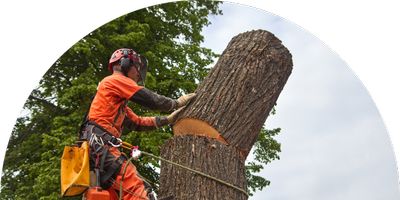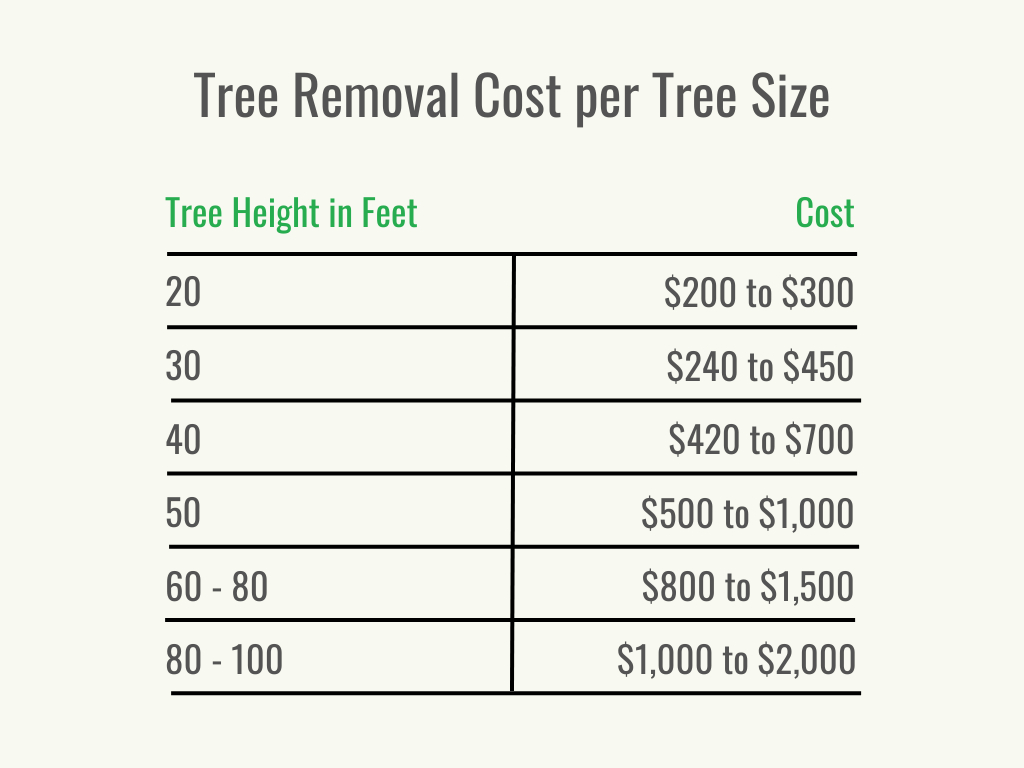Featured
Table of Contents
- – Request Tree Service Price Quotes In Cartersvi...
- – Transparent Arborist Costs In Cartersville, GA
- – Cartersville, GA Stump Removal Cost FAQ
- – Temporary Tree Removal Costs In Cartersville,...
- – Real Cartersville, GA Tree Clearing Testimoni...
- – Cartersville, GA Tree Service Cost Estimate F...
- – What Do Cartersville, GA Stump Grindings Charge
- – Timeline For A Tree Removal Project In Carte...
- – Real Cartersville, GA Tree Service Reviews
- – Cartersville, GA Tree Clearing: Project-Base...
- – How Much Should You Pay For An Tree Clearing...
- – Cartersville, GA Tree Clearing: How Much To ...
- – Budget Stump Removal In Cartersville, GA
- – What Should An Tree Cutting Cost In Cartersv...
- – Cartersville, GA Arborist Ratings And Prices

The subsections below provide more in-depth information about prices, consisting of an average range for each. TypeAverage Removal CostPineConiferPalmMagnoliaArborvitaeAshCedarSweet GumEucalyptusSycamoreCypressOakMaplePoplar You can anticipate to pay between to eliminate a pine, depending on its size. Getting rid of a pine is one of the more cost effective jobs unless it is one that has actually been around for many years and is rather big.
Request Tree Service Price Quotes In Cartersville, GA
Pines likewise have a tap root that grows deep into the soil, which can prove to be more hard to eliminate. The process itself includes a specialist cutting the tree, clearing the base, cutting the surface area roots, getting rid of the stump, and finally treating the soil. Without an expert hand, you run the risk of leaving pine seedlings behind, which will fall from the roots of distressed pines.
Transparent Arborist Costs In Cartersville, GA
The U.S. nationwide average for conifer removal is around to have the conifer cut down, carried away, and the stump ground or eliminated totally. Conifers are normally easier to get rid of, and although they can grow quite high, they do not cost a fortune to eliminate. Conifers consist of pine, spruce, fir, and juniper trees.
Cartersville, GA Stump Removal Cost FAQ
While conifers are beautiful, they kill native plants and certain types of lawn (tree service). The typical price of palm elimination depends on the height as much as the type, varying from.
Temporary Tree Removal Costs In Cartersville, GA
That is why it is important to understand which type you are removing. While you do not need an herbicide to kill a palm tree, there are some actions your removal specialist will need to require to make sure the job is done correctly. There are 2 ways they can eliminate them: by slicing them down or digging them up.
Real Cartersville, GA Tree Clearing Testimonials
This is since small animals like rats and scorpions frequently reside in them. Plus, many types will have spikes, too. From there, they remove the actual tree and then the stump. Anticipate to pay between to remove this type of tree, depending upon the specific size and information of the job.
Cartersville, GA Tree Service Cost Estimate For Homeowners
There are three types: green, white, and black ash. White ash is known for its lots of colors. With its gray-tinged bark, its leaves are green or purple in the spring and golden yellow or purplish-red in the fall. They delight in moderate climates and great deals of sun. The green ash is called such due to its green or yellow foliage.
What Do Cartersville, GA Stump Grindings Charge

Nevertheless, the bark is softer, and it blooms later on in the year. Due to the variation in height, the elimination rate variance is broad from. A coniferous, evergreen tree, the cedar is a durable species. True cedars delight in higher altitudes, mainly in the Mountain ranges and the Mediterranean. A real cedar can grow as high as 160 feet in height and is frequently planted in the United States as a landscape choice.
Timeline For A Tree Removal Project In Cartersville, GA
The development of false cedars varies from 50 feet as much as 230 feet high. Property owners may pay anywhere from, depending on the roots. With star-shaped leaves and stunning fall colors, the sweet gum is considered a medium to big tree. Enjoying full sun, the sweet gum can not endure contamination.
Real Cartersville, GA Tree Service Reviews
Generally, it costs between to eliminate a eucalyptus. Eucalyptus are not common everywhere, however they are rather big compared to others, which is why even the smaller ones are so expensive to get rid of.
Cartersville, GA Tree Clearing: Project-Based Pricing
There are a handful of ways to do this, consisting of burning, pulling, grinding, or killing them with herbicide. Expect to pay in between to get rid of sycamores, based upon the height, trunk size, and amount of work included. Sycamores are one of the biggest hardwood trees, generally varying from 60 to 100 feet high and as wide as 15 feet.
How Much Should You Pay For An Tree Clearing In Cartersville, GA
The first 2 actions will expose the insides of the tree and cut off the flow of nutrients up the trunk. From there, a professional applies herbicide to eliminate the tree and cuts down the trunk.
Cartersville, GA Tree Clearing: How Much To Expect
There are various kinds of Cypress trees, but the most widespread are the Leyland, Arizona, Bald, and Italian. The Bald Cypress grows in swampy or really moist areas while the others enjoy a dry, warm, or hot environment (tree clearing). They can grow as tall as 80 to 100 feet tall
Budget Stump Removal In Cartersville, GA

Prone to diseases, the Cypress is one of the most valued woods for furniture. The typical oak grows to around 60 feet, and depending upon the complexity of the removal, it costs approximately to get rid of. The specific size of your oak and the effort required to fell it affect what you will actually pay for removal along with any additional services like stump grinding.
What Should An Tree Cutting Cost In Cartersville, GA?
Access to the trees and the roots will likewise affect the total expense. Maples are normally among the more pricey trees to remove because of their size and the work included in the removal.
Cartersville, GA Arborist Ratings And Prices
Poplars are giants of the types. Growing as high as 90 to 115 feet, these enormous lumbers are mainly found in The United States and Canada and include the aspen, cottonwood, and balsam trees. Boasting an extensive root system, poplars can be costly to remove when completely grown. The process to eliminate trees includes all the cutting and cutting of the branches and trunk, bringing it down to a stump.
Table of Contents
- – Request Tree Service Price Quotes In Cartersvi...
- – Transparent Arborist Costs In Cartersville, GA
- – Cartersville, GA Stump Removal Cost FAQ
- – Temporary Tree Removal Costs In Cartersville,...
- – Real Cartersville, GA Tree Clearing Testimoni...
- – Cartersville, GA Tree Service Cost Estimate F...
- – What Do Cartersville, GA Stump Grindings Charge
- – Timeline For A Tree Removal Project In Carte...
- – Real Cartersville, GA Tree Service Reviews
- – Cartersville, GA Tree Clearing: Project-Base...
- – How Much Should You Pay For An Tree Clearing...
- – Cartersville, GA Tree Clearing: How Much To ...
- – Budget Stump Removal In Cartersville, GA
- – What Should An Tree Cutting Cost In Cartersv...
- – Cartersville, GA Arborist Ratings And Prices
Latest Posts
Walker Mill, MD Arborist: Affordable Solutions
Top Tree Cutting Reviews In Demopolis, AL
Typical Tree Cutting Pricing In Pinellas Park, FL
More
Latest Posts
Walker Mill, MD Arborist: Affordable Solutions
Top Tree Cutting Reviews In Demopolis, AL
Typical Tree Cutting Pricing In Pinellas Park, FL